impatience
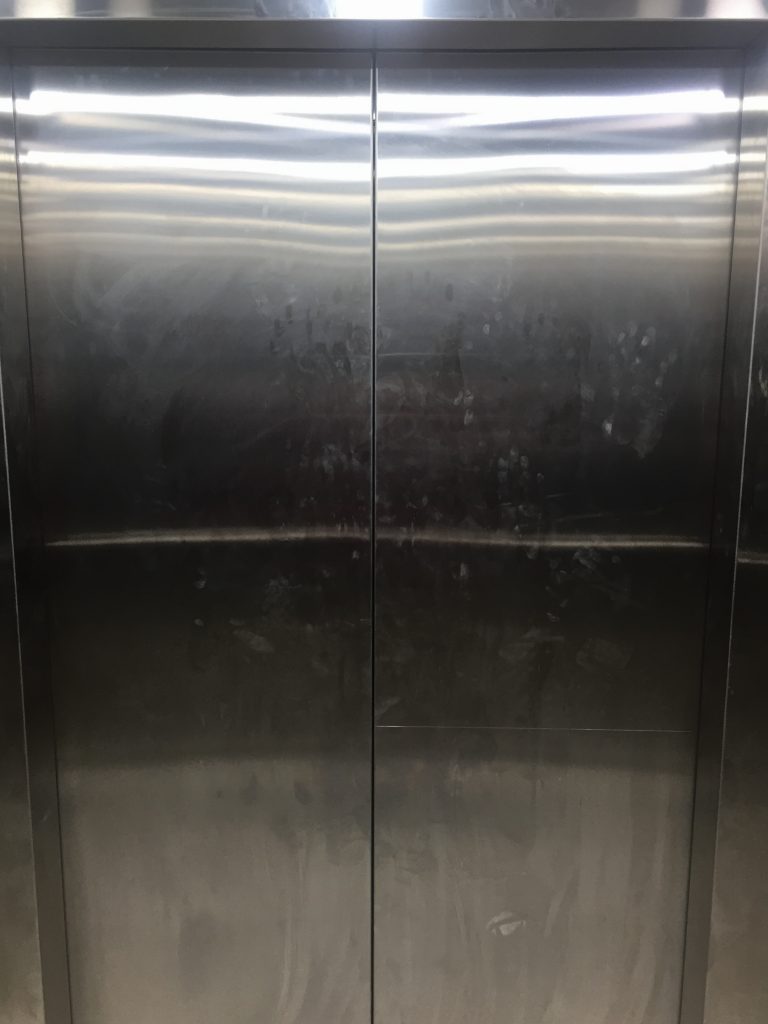
The traveler explores the American Wayside, verifying the contents of a mysterious guide written by a man with whom he shares a likeness and name. Excerpts from ‘Autumn by the Wayside: A Guide to America’s Shitholes’ are italicized. Traveler commentary is written in plain text.

‘Much as the scientists of Copernicus’ era recognized the necessity of standardized measurement, early Americans understood that democracy, as a man-made concept, was abstract at best. Unlike the iron resolve of their former monarchy, a ‘free’ state encouraging free speech and free interpretation of the Constitution allowed for the chance that an amount of well-natured ‘silliness’ could derail the thing entirely.
Silliness, at the time, existed in a country that suffered a perpetual ‘witching hour,’ when the veil between the spirit world and the world of mortals was at its thinnest. The forests of America remained untamed and were thick with darkness and superstition- superstition being the catalyst of a good, pioneering prank. Come April 1st, farmers would dress as witches and miners would dress as ghosts and, come April 2nd, it was a coin-toss as to whether those people had gotten a good laugh or been burned at the stake.
It was with these cautionary tales in mind that the nation’s founders instituted the ‘Fool-Safe Zone,’ an acre of land and a group of families that would dedicate their bloodlines to preserving serious discussion and curating a set of understood facts, acting, essentially, as a magnetic north to America’s reality. Theoretically, when the world churned out some new madness, the States could look to the ‘Fool-Safe Zone’ much in the way we grasp desperately for the bus’ handhold as it lurches over uneven terrain. In practice, of course, the founding reality of the ‘Fool-Safe Zone’ was more like magnetic north than could be understood at its creation- neither was as fixed as was imagined.
Now, the ‘Fool-Safe Zone’ serves as the exact opposite of its intended purpose. It lives on, almost cult-like, an inbred society of humans that holds to facts as they were understood in the 1700s. It is an illustration of what might happen if we take ourselves too seriously for too long.’
-an excerpt, Autumn by the Wayside
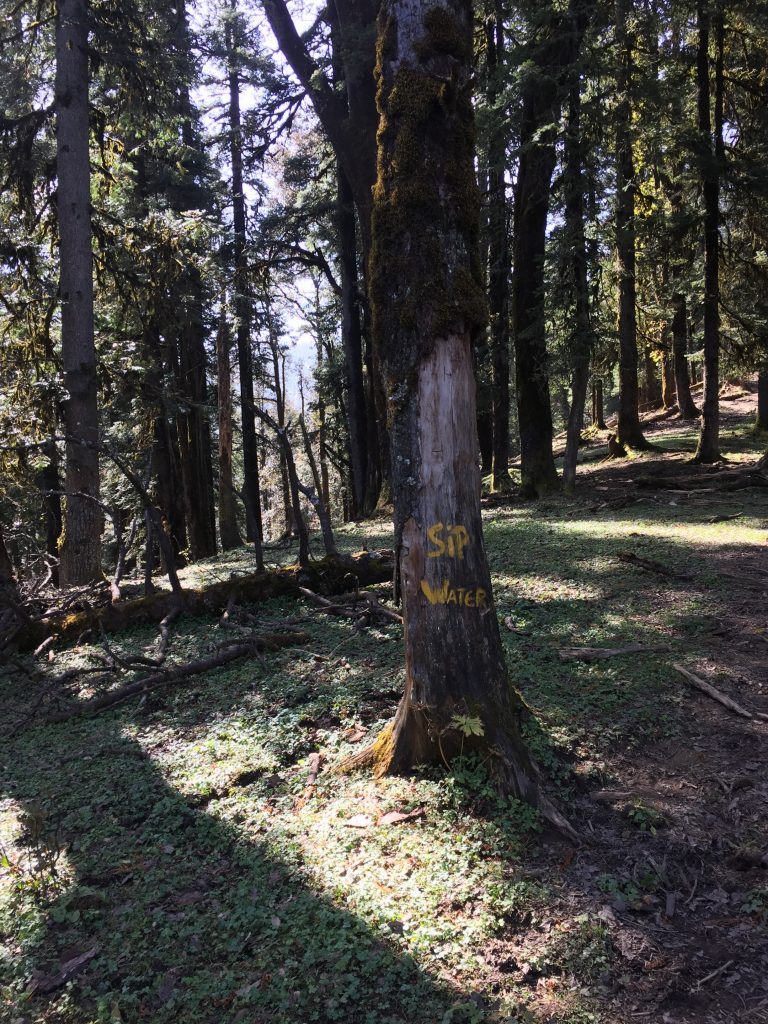
‘[traveler] was a sales associate at ‘The Tchotchke Closet’ when he departed, suddenly, on the narrated road trip that would eventually become the collected ‘Autumn by the Wayside.’ Though presented here as a simple travel guide, his unpublished musings reveal the tumultuous journey that occurred behind the scenes, including a battle with addiction and a near-fatal accident just months into his travel. He contributed to several other guidebooks from the road, among which are ‘Dark Games to Play at Your Local Buffet’ and the critically acclaimed ‘DEAR GOD DON’T DRINK THAT.’
‘Autumn by the Wayside’ is published with the blessing of [traveler]’s parents, who forgive his wordless departure, and of his sister, who does not.’
I read this all the first time I was handed the book and I’m sure I must have read it again in the meantime but it is, admittedly, a crisper page in a book that is dirty with my fingerprints. I did read it again after the accident, sometime in that hazy month of mending bones and physical therapy. At that point, when it confirmed there was an amount of my own destiny between the pages of Shitholes, I assumed the passage had given up the few secrets it contained and, like an idiot, I hung the last line on a wall in the living room of my soul:
‘Autumn by the Wayside’ is published with the blessing of [traveler]’s parents, who forgive his wordless departure, and of his sister, who does not.’
I assumed it meant there would be an end to this, an end in which I would return home, having paid for a conservative haircut and a truck-stop shower, to sheepishly greet a family that would cry and yell and eventually embrace me and welcome me back into the house I grew up in. I worried about my sister, of course, but it would be like her, like us, to agree on the line as a little nod to the months it would have taken her to speak to me civilly. I would have apologized a thousand times by then over a thousand cups of coffee and she would have said, finally, that she was still so sure I would disappear again and she would make me promise I wouldn’t, that my traveling days were over. I would make that promise and we would write that line together, a line like a scar, that would heal the hurt but serve as a reminder that the hurt once was. We’ve always fancied ourselves world-class writers.
I read, somewhere, that an editor helps a writer understand their own work and, now that I’ve met my own, I couldn’t agree more.
This passage is an obituary.
-traveler
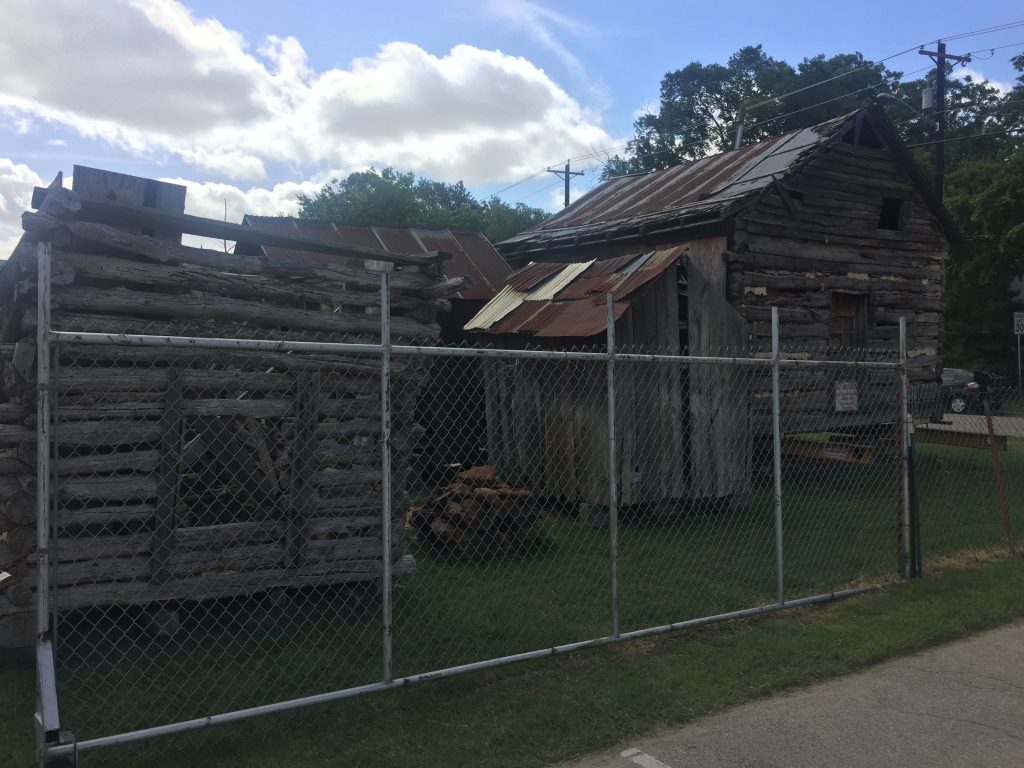
‘‘The Last Sectioned Diner’ holds on to its title by a thin, legal thread, relying on its history (claiming to have served any number of politically relevant smokers and yellow-fingered authors) to allow for an indoor smoking section to exist in a state that has long banned them. Rumored to be the result of a technical clause in this ambiguous heritage, the ‘Diner’ has instituted a system far more complex than the smoking/non-smoking binary of young America, opting, instead, for a floorplan described as ‘fractal’ and ‘endless’ in its most recent review by the local fire marshal.
A favorable dining experience at ‘The Last Sectioned Diner’ requires no little cunning on the part of the customer, for each categorized section is likely nested within a dozen others. In order to understand the destination, one must understand the many branching paths that led one there in the first place.’
The non-violent section is, inexplicably, positioned as a sub-section of smoking- that much I recognized almost immediately. Is it calming effects of nicotine? A worry that spilled ashtrays might cause fires? The waitstaff won’t say (and I’ve never been one to needlessly bother a server). All this to say I noticed the smoking the moment I arrived.
The rest, I’ve learned over a week of waiting.
This, for instance, seems to be a section that discourages speaking above a whisper. It’s a section that does not offer wine but does have an extensive kid’s menu. This is a section that enforces a certain dress code, I found, when I arrived in flip-flops and pajama pants in the middle of the night- attire that wouldn’t be out of place at many 24-hour diner chains- and was offered a seat in an area that could not entirely rule out violence but was judgement-free, at least. Seeing the people dining there was like seeing my own soul laid bare and I was soon escorted out for quietly thinking that I must be better than them, for swearing under my breath that I would take the time to pull on jeans before returning.
There are static things about the diner as well. The walls that separate the sections do not reach the ceiling- they terminate in frosted, floral glass about six feet above the floor so that the smell of smoke is always present, no matter its origin. The menus are laminated and spiralbound, their pages sticking together with the residue of a recent cleaning. The tables are always mildly wet, the coffee always weak but plentiful. The cream is always in the little unspoiling plastic tubs, stacked neatly into a little ceramic bowl. It always takes two or three to bring about any change in the coffee’s flavor and they pile like insect shells as I wait and sip coffee and eat pie. I order a steak each time, not because I want it, but because I need an easy out for when she arrives.
It is impossible not to judge someone who orders the steak at a chain diner.
The Editor arrives on the eighth day, lead to my booth by the server. She is shaking, but not for any of the physical harm she has been subject to in the previous weeks. She is shaking with the effort of suppressing her anger. Cracks in the booth’s plastic cushions split and widen as she slides in across the table. My mug rattles as her feet connect with the supporting bar below.
“I’ll be back with that Shirley Temple!” the server croons.
The Editor winces.
“Don’t worry,” I tell her as the older woman turns to the kitchen, “They don’t allow judgment here.”
“Fuck you,” she says.
“How do you keep catching up with me?” I ask, “You tricked me the first time and now I can’t turn a corner without running into you.”
“We’re on the same path, now,” she says, “I know which book you have and that’s all it takes.”
“Are you going to tell me why you’re following me?”
Her drink arrives, dripping red.
“I’ve made myself clear.”
“You edited ‘Autumn by the Wayside,’” I say, “And you think I have something to do with it.”
“You wrote it.”
“You’re the second person to say that,” I tell her, “But I haven’t written anything.”
“What’s this?” she asks, pointing to the napkin under my elbow. I’ve scribbled my observations about the ‘Diner’ there: “A favorable experience at ‘The Last Sectioned Diner…”
“That’s different,” I say, stuffing the napkin into my pocket, “I write what I see, but the only reason I’m out here is because I’m visiting the places in Shitholes. The first I heard about it was the day someone handed it to me.”
“This isn’t you?” she asks, and she opens the back of her copy to the author bio. The pages are crisp and white and the man in the picture is me.
“That picture changes.”
“Bullshit,” she says, “I was the one that had to edit your teeth back in.”
I reach out to touch the unbroken spine of her book but she snatches it from my fingers.
“But it was already written…”
“You wrote this!” she seethes, “You’re writing it now! You will write it! That’s what’s happening. You’ve been writing yourself in circles and some of us are stuck in the loop with you, you selfish fuck! We’re circling the drain!”
“Calm down,” I tell her, noting the gathering of waitstaff at the edges of the section, “I don’t want you following me- I’m on your side! How do we fix this?”
“You die,” she says, “That might work.”
“How else?” I ask, “Can’t I just finish the book?”
“You haven’t listened to a thing I’ve said,” she snaps, “There’s more than one version of the book and the one you’re writing now ends in disaster.”
“What?” I ask, “What’s wrong with this one?”
My own copy is gray and warped with water damage. It seems unsanitary to place it on the table.
“Ever wonder why the bio in your book uses the past-tense?” she asks, “That’s because we publish it posthumously.”
“You’re trying to kill me before I die?”
“Let’s just say that one of the nicer versions is a hell of a lot shorter than the rest.”
“But it’s not the best,” I say, confirming what I guessed in her averted eyes, “The best version is different.”
“The best version is complicated,” she says, “It’s long.”
“It needs a skilled editor.”
Her eyes flick back to my face and her grip tightens on Shitholes. She opens her mouth to speak when the server interrupts us with my order.
“A steak?” the Editor asks, eyeing the dry slab of meat on the table.
I try to warn her, but a condescending smile already grows across her face.
“Sorry,” I shrug, as the waitstaff descend upon her, “But you know where to find me.”
-traveler
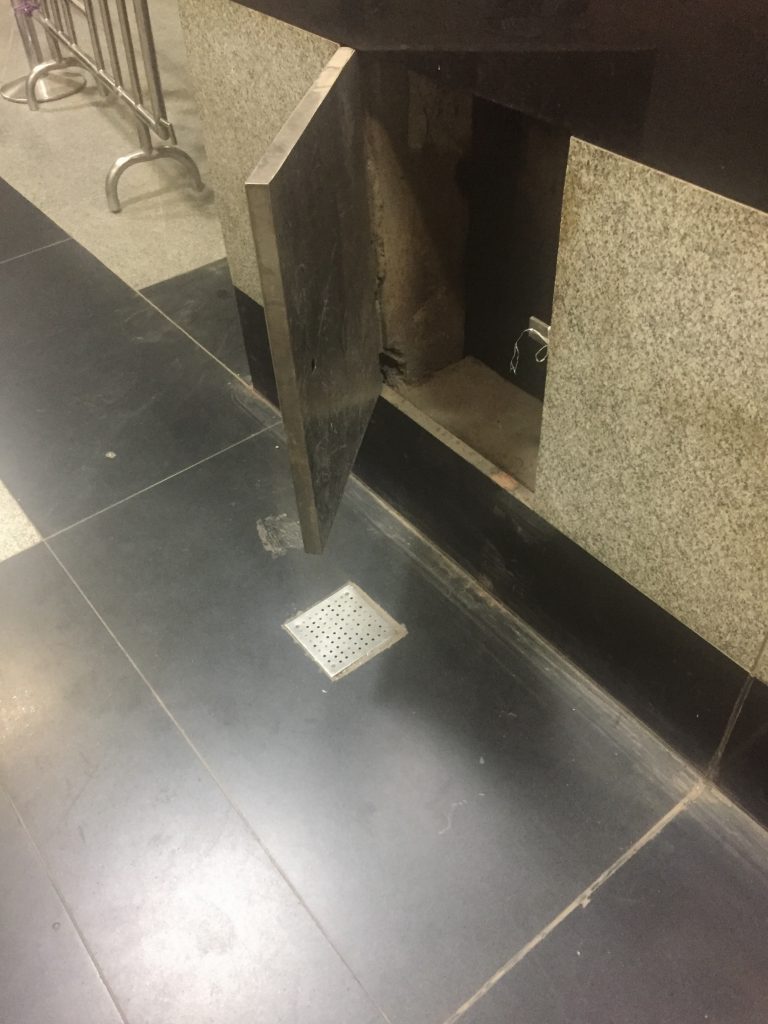
She attacks me in the subway of a city while I try to find ‘The Rat Museum.’ I push her into the path of an oncoming train.
She overturns my rented canoe and pulls me into a lake which is rumored to have flooded a town. With her rope around my neck, I am dragged underwater until I think I see the ghostly buildings of ‘Old Fredericktown’ swimming in the depths, but her lungs give out before mine do. I use her body to jettison me toward the surface.
She chases me through ‘The Bear-Proof Field’ until we each fall to the traps, just a few yards apart, and while I pry the jaws from my leg she rakes the ground with her fingers, stripping her ankle of flesh in an effort to reach me. I leave her to bleed out in the dirt.
The Woman is still limping the next time I see her. She hobbles in front of the bike as I swerve to take a familiar gray road, going well past the posted speed limit. The front wheel strikes her just as the world loses its color and we fly forward together, the heavy frame of the motorcycle spinning back up and over us. There is a moment of weightlessness followed by a good deal of pain.
The world is still gray when consciousness returns. I’ve landed in a ditch, spared serious injury by the thick mud there, churned up by run-off from the snow-capped mountains. The Woman, when I find her, is not so lucky. She is on the side of the road, undoubtedly dying again.
Her bag is at her side and, in it, I find the same objects- a shattered phone, a broken hairbrush, crushed make-up, and a ratty copy of Shitholes. I also find her wallet, tucked away in an inner pocket. I find her ID and recognize the name immediately.
This woman is the editor of ‘Autumn by the Wayside.’
My revelation is cut short by a sudden, sharp pain. The Editor has twisted her body in such a way that she is able to weakly bite the top of the hand that supports me on the asphalt and she takes a piece of me when I pull away, struggling to my feet.
The gray world has shrunk to a small triangle in an attempt to expel us. Its corners have stuck on the bike, the Editor, and myself, but it will collapse soon and we’ll be pressed out somewhere along the side of the highway. I walk to the motorcycle and grip the handles, hoping it will be enough to ensure we end up in the same place. The world shifts until it’s only a gray line that connects me and the dying woman. She sees me, because I am the only thing left in this transient reality to see.
I circle the entry for ‘The Last Sectioned Diner’ in her book and toss it to her without thinking. It lands on her broken ribcage and she curls into a ball and the sight of her pain makes me forget what I had planned on saying.
The last she sees of me is an apologetic grimace and a half-wave.
-traveler
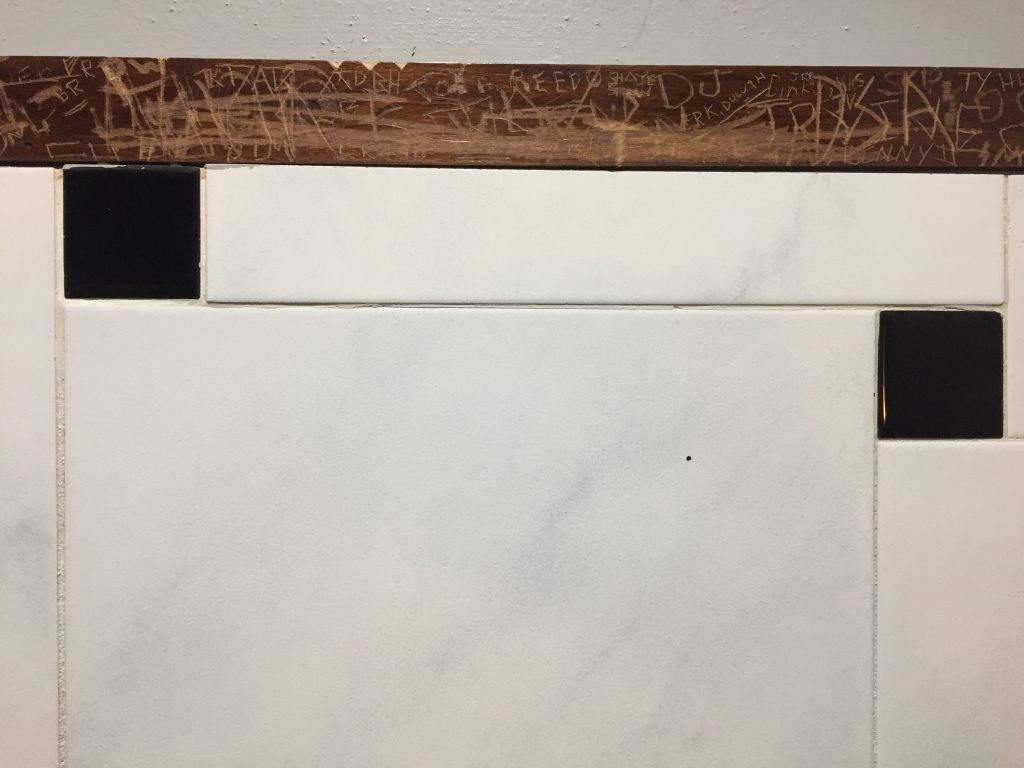
In all of my travels, I have never been to ‘Yellowstone National Park.’ From what I’ve read and from the pictures I’ve seen online, it is a strange and beautiful place. ‘Yellowstone’ is a landscape that boils beneath its surface- a place of scalding, prismatic pools that will dissolve a man’s body in a day. It is a home to wild animals and raging fires, a place to buy expensive souvenirs and to hide one’s irritation at the lack of cell service. It is a completely natural place, and, though the Wayside runs through it, ‘Yellowstone’ is a destination, not a detour. It has no place in Shitholes.
But I am compelled to go, all the same.
How much of this is the magic of the postcard? I tell myself that I am going to meet the woman, to settle this before things get out of hand. I tell myself that I have been travelling so long for this project that it could be a relief to travel somewhere for myself- somewhere made safe by the rangers, with no hidden agendas or gray histories. I tell myself that ‘Yellowstone’ in the autumn will be an experience worth having, and that I have reached a point where I might blend in with crowds again. My hair has grown out. My old injuries have healed over. My teeth are still gapped but I have learned to smile with my mouth closed. I tell myself all of this, but when I look at the speedometer, I see Alice’s pick pointing down any road that will take us in the opposite direction.
She doesn’t trust the Woman. Or she doesn’t trust me.
Have I become an adult somewhere along the way, no longer willing to run from my problems but prepared to face them head-on? Or is it the card that compels me: a volcanic spring in vintage, WPA-style, with the message overlaid: ‘Wish you were here?”
Surely not into the simmering pool itself.
When I reach the gates and pay my entry fee I wonder how she plans to find me in a park so big. I stop for lunch and ask about the specific pool depicted on the postcard. I follow their directions, several miles down the road, and pull up to see it.
And the moment I see it I realize I have no desire to.
The Woman tries to kill me. She leaps out from behind a tree and shoves me into the railing so that all the air leaves my lungs and I double over the inconsequential barrier, smelling the rotten-egg stench of the boiling water below. The Woman shifts backward to push again and I roll out of her grasp, my ribs bruising on the rusted metal. I try to hit her before I see she’s drawn a knife and she slashes me clean through my jacket, a flash of cool pain across my forearm. I run, which she doesn’t seem to expect, and by the time she’s caught on I’m halfway around the pool. She follows me and I run again. She changes direction and I run the opposite way. She throws her knife across the center and it hits the ground behind me handle-first. The water is steadfastly between us.
“What the fuck?” I yell.
It’s more an exclamation than a question but she answers anyway.
“You did this to me!” she screams, “You made me like this!”
The Woman tries to rush me again but the pool is too big. She is screaming and crying now, loud enough that a passing car might hear and stop and sort this all out. We run several more circles before she stoops again and starts to throw rocks at me from across the way, screaming with each stone, screaming with so much force that I think her vocal cords must be tearing, that she must be moments away from throwing-up, from passing out. The stones fly past me, aimed as they are with blind anger. I see my bike behind her, parked at the road. If she runs again, I might be able to break from the circle and reach it in time to drive away.
“NO!” she shrieks, seeing my eyes flick to the road, “No more running!”
She lifts her body over railing and drives herself toward me, splashing into the scalding water. There is plenty of time to run- no chance that she could swim across quick enough to catch me even in tepid water. She boils alive, her face reddening and hair falling out with each angry stroke toward me. She doesn’t make it halfway before her screaming rattles down to a hoarse cough and then sputters out entirely. She floats silently toward me, the chemical pool already loosening her skin.
I step carefully around the water, back toward the road, keeping my eyes locked on her body. I am sure, until I reach the short trail back, that this is some trick. Her bag floats out from under her as I turn to leave, ejecting a hairbrush, a phone, several pieces of make-up, and a book.
‘Autumn by the Wayside: A Guide to America’s Shitholes.’
I am nearly a hundred miles away before I look at the postcard again, realizing too late that there may yet be some magic in it. My fears are unwarranted. Staring at the stylized pool, I know I would rather be anywhere else.
-traveler
© 2024 · Dylan Bach // Sun Logo - Jessica Hayworth